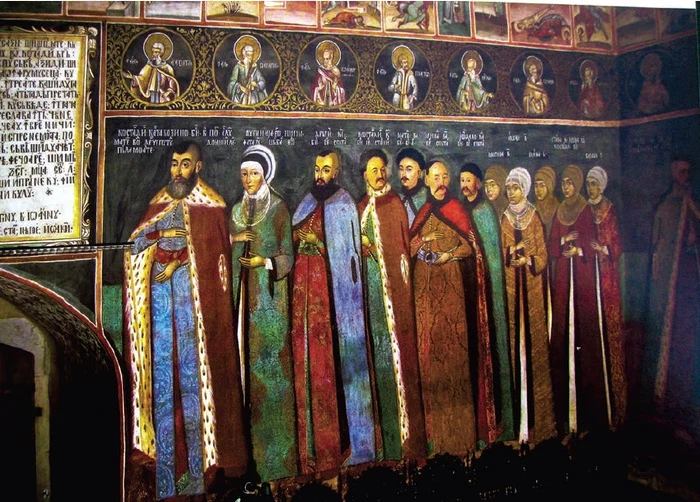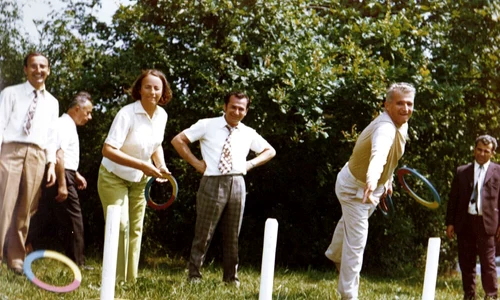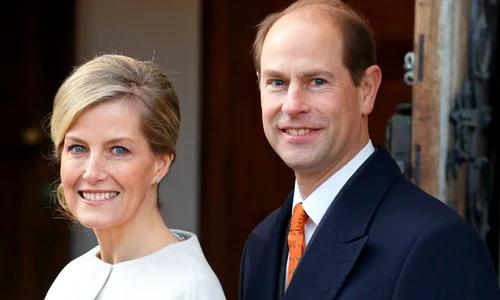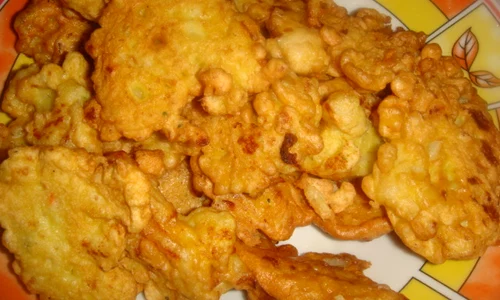
Living in Byzantium after Byzantium. The Florescu family in 17th and 18th Century Wallachia
The “Phanariot period”, which lasted just over a century from 1715 to 1821 in Wallachia, has often been portrayed as a clear break from the past, due to the Ottomans’ decision, after the reigns of Constantin Brancoveanu and Dimitrie Cantemir, not to allow local princes to be elected to the Wallachian and Moldavian thrones. In reality, for over a century beforehand, Romanian society and culture was being transformed by the growing presence of Greek families.
We have seen in the earlier chapters how even the earliest Romanian princes had to gain support in Constantinople, often by paying copious bribes, for their candidate-ships to the Wallachian throne. Later on, Michael the Brave had relied heavily on the Constantinople connections of his uncle, Andronic Cantacuzino, to get himself elected to the Wallachian throne. At the close of the 16thcentury, the Greek presence in Wallachia was sufficiently strong that it was considered necessary to include a clause in a treaty with Sigismond Bathory of Transylvania that no Greek shall be included in the twelve boyars summoned by Michael the Brave to the Diet in Transylvania. And throughout the seventeenth century, members of various Greek families, most notably the Cantacuzinos and Ghicas, had already sat on the Wallachian throne. As the great British historian of Romania R.W. Seton-Watson explains about the growing influence of the Phanariots in hisHistory of the Romanian People:“there are doubtless two distinct phases – that of permeation (1634-1711) and that of direct domination (1711-1821)”.
What assured the increasing Greek influence in Romanian life was no doubt the privileged access to the Sultan and his court enjoyed by the Greeks of the Phanar district of Constantinople. Initially, after the fall of Constantinople, the local Greeks could only rise to prominence through apostasy. But shortly afterwards, the Greeks of Constantinople were able to focus on two areas where the Ottomans were not going to interfere, namely the Orthodox Church, which remained the sole repository of Greek national identity, and the world of commerce, which was anathema to the Turks. Accordingly, some families amassed large fortunes by acting as bankers and suppliers of various products and services to the Ottoman court. They also got involved in arranging payments – both cash and credit-for the appointments to various patriarchal and episcopal thrones, and then by extension to various secular functions, including the two thrones of Wallachia and Moldavia. Thus these two Romanian principalities soon became the most prized areas of influence for the Phanariots, who saw opportunities for profit in arranging bribes to secure one or other of the thrones initially for Romanian, but then for Greek, candidates, and in arranging the export of all sorts of goods, above all cereals, from the principalities, as they increasingly became the indispensable granary of Constantinople, which already had a population of 700, 000 in the 17thcentury.

Greek boyars in Bucharest in XVIII century
Furthermore, because the Romanian principalities had managed to keep a quasi-autonomous independence within the Ottoman Empire, they became attractive locations for the Phanariots to re-invest their profits into landholdings, often inter-marrying with Romanian families. An important factor was the relative autonomy that the Orthodox church retained in Romania compared to other Ottoman-subjugated lands, and it is during the early 17thcentury reigns of Matthew Basarab and Basil the Wolf that new Romanian monastic foundations started being “dedicated” to foreign centres of the Orthodox faith, such as Mount Athos, Sinai and Jerusalem, with Greek supplanting the rather artificial use of Slavonic in the Romanian church, since in any case very few church texts had actually used the Romanian language. Through the church, Greek was also increasingly becoming the language used at court.
The first marriage between a Florescu and a Greek took place in the middle of the 17thcentury, when the Florescu family found itself yet again without any male heirs and Teodora Florescu, who had inherited the Florescu estates, decided to marry a Greek merchant by the name of State Tomaras, who duly took on the Florescu name. Theodora was the great grand-daughter of Socol Florescu, who had been murdered during the reign of Matei Basarab by a mercenaries’ revolt. Socol had had many children, and his second son Vintila Florescu had a relatively successful career, entering the divan(Princely Council) as Postelnic(chamberlain) and then Paharnic (cupbearer), while also serving as a captain in the army. Vintila named his male heir Socol in honour of his own father. However, Vintila’s son Socol had had no male heirs so the burden of carrying on the family name fell on his sister Teodora. Tomaras, Teodora’s choice of husband, was a Bucharest-based merchant who had made successful inroads at the court of Matei Basarab, which he supplied with furs and hides sourced by a brother in Kiev, illustrating the way Greek families had been able to create successful trading networks across the wider region.

Familia Cantacuzinilor la Mănăstirea Hurezi – între fete apare și Ana, soția lui Stoian Florescu
Cantacuzino family-Hurezi Monastery
For a woman of the higher aristocracy, the decision to marry a merchant was almost unheard of, as Romanians of the time were as a general rule not involved in commerce, and in particular the Romanian nobility had no involvement in, and most probably a deep aversion to, such activities. However, it suggests the growing role of trade in Wallachian society, which was closely linked to the entrepreneurial skills of the Greeks, who had established trading posts throughout the Ottoman lands and beyond. Indeed, unlike the Romanian boyars, the Greek aristocracy of Constantinople, which was quintessentially urban, had had no such aversion to trade ever since the fall of Byzantium. If Romanian boyar families such as the Florescus became gradually familiar with the world of commerce, it was essentially through marriages to Greeks.
Whilst Tomaras did not come from a grand Phanariot family, he and Teodora had a son called Stoian who married into the powerful Cantacuzino clan, who traced their origins to one of the later Emperors of Byzantium. It was to be the first of a number of marriages between the Florescus and the Cantacuzinos, the last being in the 20thcentury, when George Florescu married Marga, the daughter of the famous “Nabab” Cantacuzino, at the time considered to be the richest man in Romania. Stoian’s wife, Ana (“Ancuta”) Cantacuzino, was the daughter of Constantin Cantacuzino, already one of the richest men in Romania at the time, and related to the two Princes that were to follow, including Serban Cantacuzino, whose reign was to last ten years and was to usher a period of relative peace, prosperity and cultural achievements, to be consolidated under the reign of Constantin Brancoveanu.
So Stoian Florescu was the representative of an old Romanian family, but he was half-Greek and had forged strong connections with the world of Greek merchants, and, through marriage, to the highest Phanariot aristocracy, which was increasingly influential in the running of Wallachia. He was to use his heritage, connections and exposure to the world of commerce to his financial advantage, mortgaging the family properties he had inherited to borrow money and then lend it on at a profit. In doing so during a period of relative prosperity, he greatly enlarged the family fortune by re-investing his profits in land, thereby extending the Florescu estates. Stoian and Ancuta Cantacuzino were to have three children:Marica, who was to marry Radu Golescu, the ancestor of the famous 1848 revolutionaries;Safta who went on to marry a Moldavian boyar;and a son called Istratie in honour of his grandfather State Tomaras. Istratie was to inherit so many properties and so much money from his parents that he became known as “Zlatovici”, meaning the “Son of Gold”.
Istratie Florescu was welcomed at the court of his cousin, Prince Serban Cantacuzino, who ruled Wallachia from 1678 to 1688, but, perhaps indicative of the relative stability and prosperity of this period of Romanian history, he seems to have been more interested in managing his various properties than in pursuing a career in politics. He married a boyar called Voichita Poenaru, a relative of Vlad Tepelus (who had married the first Maria Florescu), and their sumptuous wedding was recorded in the state’s treasury books, costing 508 silver thalers and 750 gold ducats, a huge sum for the period. He rebuilt the Florescu church and manor house at Floresti, and the family monastery at Gaiseni, which now featured portraits of both his parents and their five children (Constantin, Smaranda, Eudoxia, Pulcheria and Ancuta). Sadly the church was subsequently destroyed in 1918 so we have no record of how they looked.
When Serban Cantazcuzino died in 1688, his only surviving son was five years old, and the boyar council appointed Constantin Brancoveanu as the new Prince, inaugurating one of the greatest and longest reigns in Romanian history, particularly from the point of view of culture and the arts. Brancoveanu is a perfect example of a Greek-Romanian fusion prince, and the architectural and ornamental style known as “Brancovean” is indeed heavily indebted to Byzantine models. His mother was Stanca, the sister of Serban Cantacuzino, and he was therefore closely connected to one of the most powerful families of the Phanar, whilst his grandmother was a sister of Contantine Basarab, enabling him to claim descent from the oldest local Wallachian dynasty. He was enormously wealthy already on his accession to the throne, having inherited huge domains made up of some 200 villages and various other estates from his grandfather Preda and from the Basarab line, and just as Stoian Florescu had been referred to as “Zlatovici”, a nickname of Constantine’ s had been “Altyn Bey”, or Prince of Gold.

As a cousin of Constantin Brancoveanu, Istratie Florescu continued to enjoy access to the Princely court, and Brancoveanu, who was a contemporary of Louis XIV, used culture and an urbanized court as a way of centralizing power. It is in this context that we should see his foundation of the first Romanian Academy, which was designed to educate the Wallachian elite, although unsurprisingly the language of instruction was classical Greek. It was most probably in order to remain closer to this more formalized court centred around the new princely Palace at Mogosoaia that Istratie felt obliged to extend the Florescu properties by buying a new estate to be called Floresti to the north of the city of Bucharest, which became known as Floresti de Sus (upper Floresti), while his second estate nearer to Bucharest was called Floresti de Jos, or lower Floresti.
But it soon became clear to members of Brancoveanu’s court that this golden age was becoming inherently unstable, owing to the growing Habsburg, Polish and Russian encroachments on Ottoman territory, in particular after the momentous Treaty of Karlowitz of 1699, which returned the whole of Hungary, Transylvania and the Banat to Habsburg rule. This treaty marks the beginning of the decline of the Ottoman Empire, and both Constantin and Dimitre Cantemir, his rival on the Moldovan throne, had to play a game of constant deception to keep all three powers at bay, secretly longing for Austrian “liberation” (in the case of Brancoveanu) or Russian “liberation” in the case of Cantemir. So it is around this time that Istratie made the wise decision to exchange one of his Bucharest properties for a large house within the walls of Brasov across the border in Transylvania, echoing a policy of buying “insurance” north of the Carpathians which had already been practiced by earlier generations of Florescus. It is interesting that Brancoveanu was himself doing exactly the same thing at the time, fully aware of his increasingly precarious position.
But Istratie was not going to make use of this house, for he died at a relatively young age on 22 March 1708, leaving behind his widow Voichita and a daughter Ancuta. Brancoveanu took care to write to the Mayor of Brasov, announcing the death of “our cousin” and explaining that he was sending an envoy to take care of Istratie’s house, and to make sure that Voichita would receive the rental revenues it generated. Brancoveanu was also very interested in arranging a match for his young niece Ancuta Florescu, and in 1713 a marriage was arranged between Ancuta and a young Greek doctor called Antonache Calliarch, who was the son of Pantaloen Calliarch (1660-1725), Brancoveanu’s personal physician, a man well-known at court for his erudition, having amassed a huge collection of books over his lifetime. Pantaleon’s family had come from the Greek island of Chios, which had played a crucial role in the trade routes of the eastern Mediterranean, and which the Turks had taken over from the Genoese in 1566. He had been first hired by Brancoveanu in 1694 at a salary of 1, 600 tallers a year, whilst receiving valuable gifts from the Prince on the days of various religious festivals. His son Antonache had been sent to study at a Jesuit School in Sibiu and had then completed his further studies in medicine at the University of Padua, which, being part of the Venetian state, was the university of choice for Greeks from the Levant eager to acquire a western university education.
Antonache’s marriage to Ancuta was the third marriage we know of between a Florescu and a Greek, and also the third time that the Florescu name was to pass through the female line, for Antonache Calliarch was over time to assume the Florescu name, and to pass it on to his children, although he was clever enough to use it tactically during his own lifetime, signing himself “Calliarch” when he needed to emphasize his Greek roots, whilst calling himself “Florescu” when a Romanian identity proved more suitable, suggesting the fluidity of the two nationalities at the time. Thus the Calliarch-Florescu marriage in many ways epitomised the Romanian-Greek “fusion” culture that Brancoveanu had sought to achieve. Brancoveanu personally presided at the wedding of Ancuta and Antonache, becoming “nas” (godfather) of the newly-weds, and Antonache was duly appointed postelnic(cupbearer) at Brancoveanu’s court.

Biserica de la Florești, ctitoria comisiului Stoian Florescu și a lui Istrate și Voichița Florescu
Floresti Church
But Antonache was not to serve Brancoveanu for long for it was in 1715 that latter and his family were seized and taken to Istanbul, where he was mercilessly slaughtered by the Sultan for his “treachery” in plotting with the enemy powers of Austria and Russia, ushering in the “Phanariot century” during which thirty three Princes drawn from twelve Phanariot families ruled the two lands of Wallachia and Moldavia (an average of one every two years). Although the vast majority of Phanariot Princes were Greeks from the Phanar district of Constantinople, it is important to remember the malleability of national and ethnic identity at the time, and the so-called Phanariots included the Albanian-origin Ghicas, the Romanian-origin Racovita family, and various Greek families such as the Cantacuzinos which had become Romanian-ized to varying degrees.
Shortly after Brancoveanu’s tragic deposition, Nicolae Mavrocordato, an accomplished Prince with some exposure to enlightened ideas, was appointed to the Wallachian throne. But his preference for Greeks over local boyars, and eventually his persecution of the local boyar class, including the killing of a number of boyars as well as the well-respected Metropolitan Antim, led a number of Wallachian boyars to begin plotting for his removal and the liberation of Wallachian lands by the increasingly powerful Austrians, now directly ruling Transylvania just north of the Carpathians. Interestingly, Antonache, assuming the role of a Romanian boyar in spite of his Greek origins, was at the forefront of these plots, and when Nicolae’s brother Ioan Mavrocordat was appointed the new Prince of Wallachia in 1717, Antonache and his family exiled themselves to Sibiu, where his father had deposited 10, 000 ducats in a local bank, allowing him to live a comfortable life. There he befriended the Austrian General Steinville, at the time commanding the Austrian army in Transylvania, who acknowledged the presence of “a certain nobleman called Calliarchi”.
Antonache indeed soon became the leader of a group of pro-Austrian exiled Wallachian boyars in Transylvania, and on 23 September 1717 he sent a petition to Prince Eugene of Savoy, the great Hapsburg commander, asking him to liberate Wallachia from the Turks and dismiss Ioan Mavrocordato. The following year, Mavrocordato offered an amnesty to the Wallachian nobles, on condition that they return to Wallachia, failing that all their assets would be confiscated and placed in the Princely Treasury. But Antonache refused to return, and on 12 August 1718 he wrote a further address to the Austrians, this time to the Emperor Charles VI himself, asking for permission to continue to live in the Empire, which was duly granted.
It may seem odd that Antonache, a Greek, had taken such a strong stance against his fellow Greek Mavrocordato, going so far as to petition for Wallachia to be liberated from Ottoman, and therefore Greek, rule. But his early education at a Jesuit school in Sibiu followed by his studies at Padua must have opened his eyes to the increasingly enlightened worlds of central Europe, which he would have compared to the relatively backward Wallachia of the early Phanariot period. Furthermore, his studies at Sibiu, where the Austrian Governor of Transylvania was based, would have provided him with a number of contacts with the Austrians living there, making him a natural leader of the group of exiled Wallachian boyars. Finally, and perhaps most significantly, he was closely identifying himself with the Wallachian boyar interests of his wife’s family, rather than his Greek roots. In short, he was becoming Romanian-ized. It is no coincidence that in each of his two appeals for Austrian intervention in Wallachian affairs which have survived, he signed himself “Florescu” and not “Calliarch”, emphasizing his Romanian identity.

Florescu's coat of arms
In total Antonache and his family spent thirteen years in Habsburg-governed lands, which now also included Oltenia, where a number of boyars elected Gheorghe Cantacuzino as Ban (Governor), ruling as a subject of the Austrian Emperor. It was during this time that the pro-Austrian Antonache was awarded the title of “Graf” (Count), and the ancient Florescu coat of arms changed from being simply a lion rampant with a flower in its hand above a crown with five balls, to a crown with nine balls over a lion rampant holding a flower placed over the Wallachian eagle.
It may seem surprising that when Antonache eventually returned to Wallachia in 1730, he embarked on a long and highly successful career serving Ioan Mavrocordat’s son Constantin. But Constantin was a highly enlightened figure who was to become one of the great rulers of Wallachia, and whose reforms even won the praise of France’s Mercure de Francein 1742. Antonache entered Constantin’s divan shortly after his return to Wallachia, but, interestingly although perhaps not surprisingly, he now chose to sign his name Calliarch instead of Florescu. He was made Clucer (Master of the Court) from1739-40, then Ban of Craiova (1742-1744) – the second highest position in the principality and equivalent to that of Duke or Governor-becoming the second member of the Florescu family to hold this title.
He eventually became treasurer from 1745-48, which was a crucial role as it involved implementing Mavrocordato’s important financial reforms. It may also seem strange that Constantin Mavrocordato relied so heavily on one of the main opponents of his father’s reign. But he must have been short of talent to implement his enlightened reforms, and most likely considered Antonache a kindred spirit, with his Greek culture and background, erudition, ability with languages, and exposure to the ways of the west and to the ideals of the Enlightenment.
Towards the end of his life, Antonache owned a manor house surrounded by a great orchard and garden near the Colentina Hill in an area which at the time was called Floresti, but now has become part of Bucharest and is known as Floreasca. It was there that he received the commander of the Turkish troops in 1738. In addition he owned an estate in Baneasa to the north of Bucharest, and a house further south close to the Dimbovitza River near the Church of Saint Spiridon the Old, which originally functioned as the chapel to the house, and had probably been built by Stroe Florescu on lands originally belonging to the Cantacuzino family. In 1748, Constantin Mavrocordat rebuilt the church and dedicated it to the Patriarchate of Antioch on the occasion of the Patriarch’s visit to Bucharest. Like so many other churches in Bucharest, it was subsequently destroyed by Ceaucescu, and then rebuilt. 1748 was also the year of Antonache’s death, and he was buried not at the traditional Florescu monastery of Strambu Gaiseni, but by his father Pantaleon in the Church of St John of the Greeks on Calea Victoriei, which is again indicative of the growing hellenization of the family, and of the way the family’s life was becoming increasingly focussed in and around Bucharest (it is interesting to note that the decision to bury family members in St John of the Greeks was reversed after the Phanariot period, when the family adopted the Monastery of Tiganesti, near Snagov, as their burial place of choice).

Trei generații ale familiei Florescu în secolele XVIII-XIX
Three generation of Florescu Family
Antonache Florescu and his wife Ancuta had three children:a daughter Smaranda, who married Constantin Kretzulescu (who was to become the Ban of Craiova and then Treasurer of Wallachia), another daughter called Eudoxia who married into the Moldavan Sturdza family, and a son by the name of Constantin, who began his career in politics in 1738 when he was made Postelnic (chamberlain) in the traditional way, then Spathar (military commander) in 1753, and then Clucer (master of the court) the following decade. He married a Romanian by the name of Arghira Merisanu, who was the daughter of the great Vornic Barbu Merisanu, and served under Constantin Mavrocordato, and then under Constantin Ravocita, and the two Ghica Princes, Grigore and Matei. His son Ionita was to marry Ana Ghika, the daughter of the Ban Dumitrache Ghika and his wife Maria Vacarescu.
This period was marked by the ongoing encroachments of the Austrians and the Russians on Romanian lands, and Constantin lived through the Austro-Russian campaign against the Turks of 1735-39. Traditionally, the Florescus had been pro-Austrian, but that war proved to be a disappointment, with the Treaty of Belgrade of 1739 resulting in the Austrians surrendering the Banat of Oltenia, including lands traditionally owned by the Florescu family. This also coincided with the Russians becoming the most effective force against the Turks, culminating in the famous Treaty of Kuchuk-Kainarji of 1774 under Catherine the Great, which marks a new phase in Romanian history, allowing Catherine to pose as the defender of the “Dacian” people against the Turks, thereby attracting the support of many boyars who had previously looked to Austria as their main hope for liberation.
As the Phanariot century drew to a close, the Florescus continued to be closely involved with the regime, with Ionita Florescu (1741-1801) holding a number of positions in the dCumpără acumivan, including stolnic (steward) in 1783, paharnic (cupbearer) in 1785, clucer (master of the court) in 1791, and then in 1795 vornic (lord chamberlain) and efor (administrator) of the Pantelimon monastic foundation, which included a hospital. He was also Mayor of Bucharest, a Prefect, and Governor of the Dimbovita district (1799-1801). His wife Ana Ghika was a member of the Phanariot family which dominated Romania during that period. In spite of their Romanian family name, Ionita and Ana continued to speak Greek at home, as had Ionita’s father and grandfather. They had six children, the eldest of which was Iordache who was born during the French Revolution, entered the Divan in 1812, and died in 1848, another year of revolutions. It was fitting that Iordache’s wife Ana was the sister of Alexandru Sutu, the last Phanariot Prince, who died in 1821. His funeral marked not just the end of his life but can be taken as the symbolic end of an entire era, and it was wholly appropriate that Iordache and his brother Emanoil Florescu were present, representing the Florescu family.
Romanians take great pride in their Byzantine inheritance whilst having been taught to scorn the Phanariot period. In truth it is impossible to disentangle the two. For although Nicolae Iorga in his book Byzantium after Byzantiumhas explained how the world of Byzantium survived the fall of Constantinople, the lands of modern day Romania had at best only played a peripheral role during the Byzantine Empire, which only extended into the coastal region of Dobrogea. Whilst the early Wallachian Princes had modelled their courts on Byzantine models, these were adapted not directly from Byzantium, but from Bulgarian and Serbian copies of the original. Consequently, it is only due to the growing presence of Greeks in Romanian lands in the 17thand 18thcenturies, and foremost amongst them the Phanariots, that the world of Byzantium fully permeated Romanian society and culture. This permeation created a new Romanian-Greek “fusion” civilization, which resulted in the Romanian elites becoming more urbanized, more sophisticated, and more international. The identity of these elites became increasingly fluid, as Romanian families like the Florescus became hellenized by learning Greek at school, attending church services held in Greek, and inter-marrying with Greek families, whilst Greek families became Romanian-ized after living in Romania for successive generations and inter-marrying with local families.
Eventually, when the echoes of the French Revolution brought the first stirrings of nationalism to Romanian lands in the early nineteenth century, paradoxically it was the Romanian elites’ exposure to the cultivated, urban and international world of the Phanariots that made them so receptive to these new ideas, and therefore helped them rediscover their Romanian-ness. And when the first Romanian revolution occurred in 1848, it is entirely fitting that Romanianized Greeks like the Rossettis played a leading role, whilst the revolution itself was secretly planned in the family home of those Florescus which had been so hellenized over the previous two centuries.















